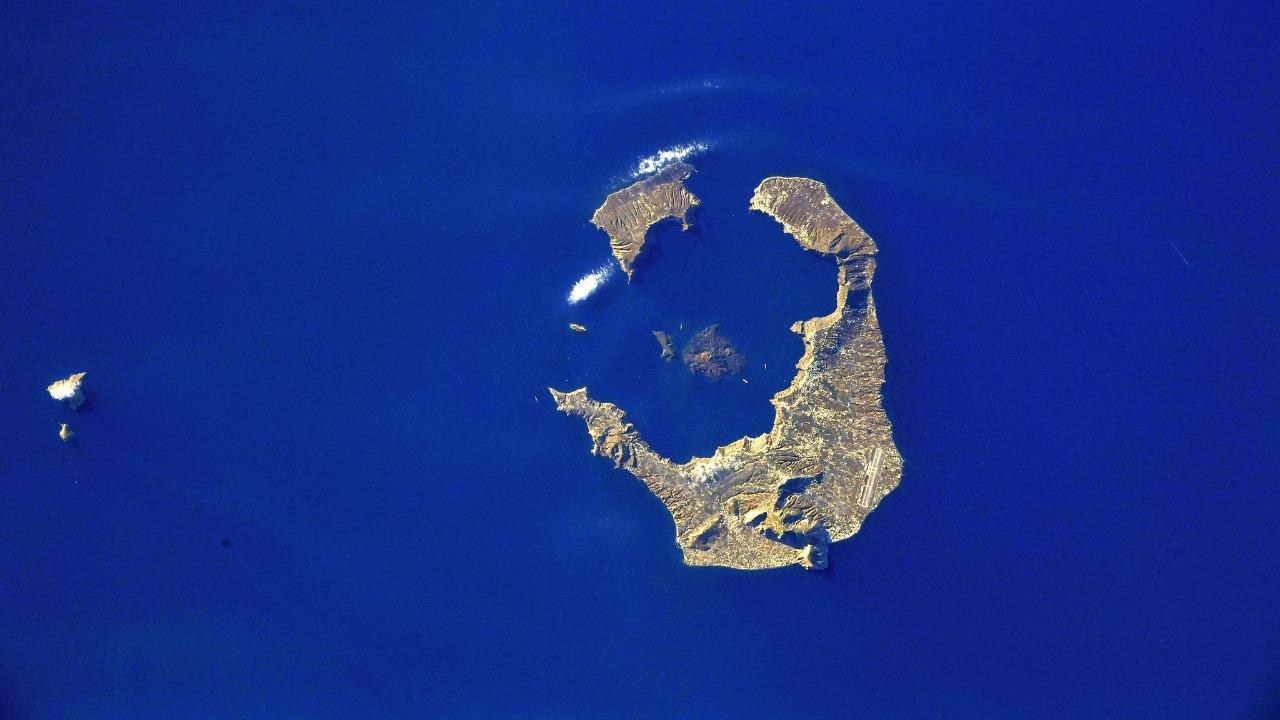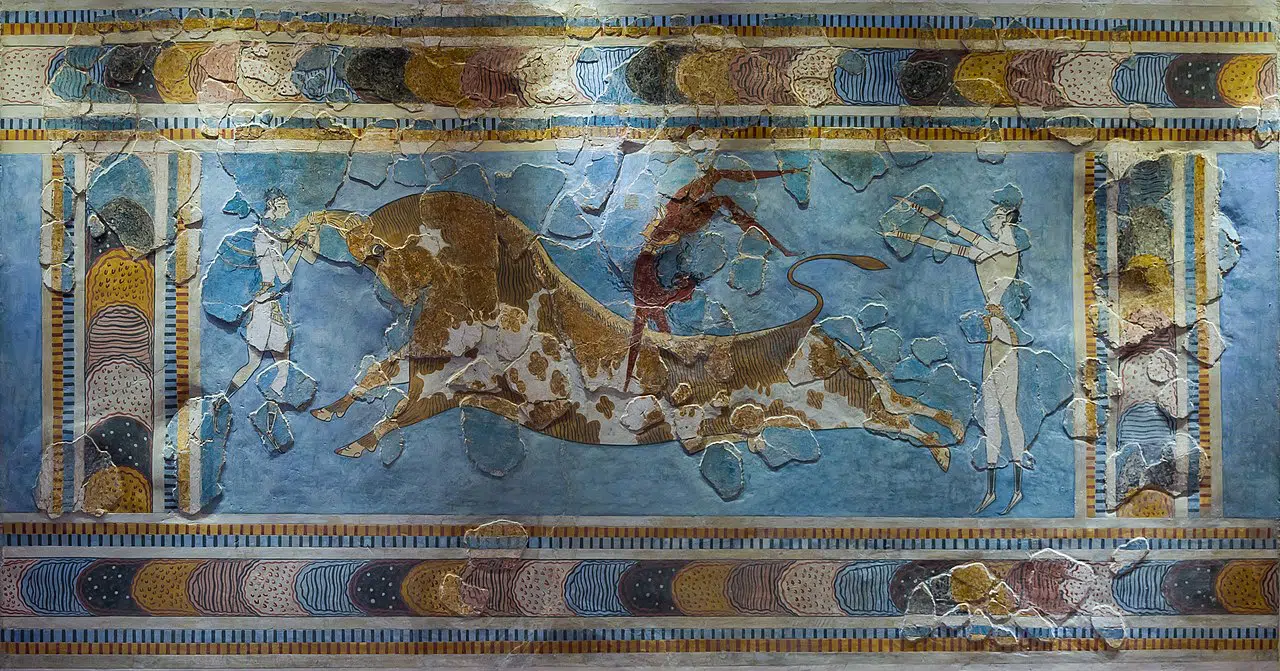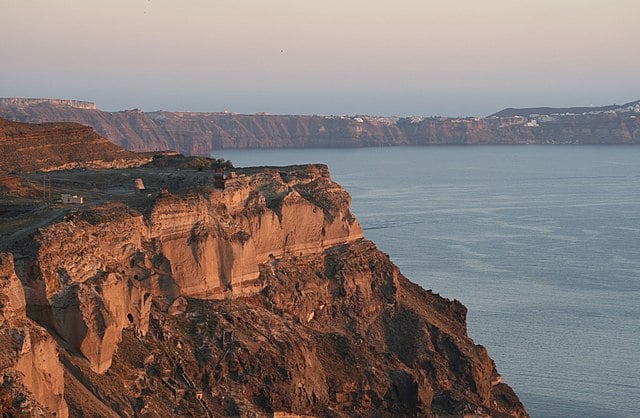
Researchers have been speculating about the location or nature of Atlantis since Plato first wrote about it. A huge variety of theories have arisen, especially in modern times. Popular theories include identifying Atlantis with the Azores, Antarctica, or South America.
But one theory which has some respect among academics is that Atlantis could be connected to the Minoans. The Bronze Age Minoan civilisation bears some striking similarities to Plato’s description of Atlantis.
How the Minoan Civilization fits Atlantis
In his works called Timaeus and Critias, Plato presents a detailed description of Atlantis. He explains that it was a powerful civilization. The Atlanteans controlled one main island, several others, and parts of the continent.
How does this description compare to the Minoan civilization? Well, historians know that the Minoans ruled over Crete as their main island, but they also controlled several other islands in the Aegean Sea. They also seem to have had colonies on parts of the continent, such as in Anatolia and ancient Palestine.
Also, Plato describes how the harbor of Atlantis was full of ships and merchants ‘coming from all parts’. In other words, it was a center of international trade. This matches perfectly with the Minoan civilization. They were the dominant trading force of their day. Minoan artefacts have been found all over the Mediterranean world for this reason.

War Between Atlantis and Greece
One of the main features of the story of Atlantis is the fact that this island fought a war against Greece. The Atlanteans were the aggressors. Despite their immense power, the Greeks were able to defeat them.
This is an important detail which is often ignored in discussions of Atlantis. Historically, it is known that the Minoans really did fight a war with the Greeks (often called ‘Mycenaeans’ in this time period). And just like in the legend of Atlantis, the Greeks were victorious over the Minoans. We do not know who the aggressor in this historical war really was. However, we do know that later Greek legend presents King Minos of Crete as an aggressor against the Greeks.
The Connection Between Santorini and Atlantis

In one part of Critias, Plato describes the metropolis of Atlantis. He explains that it was surrounded by alternating circles of land and sea, with a canal cut through from the outer sea to the central island. He mentions that there was a mountain in the center of the island ‘at a distance of about 50 stadia’. This implies that the center of the island was 50 stadia from the sea. Plato later confirms this by explaining that the canal from the sea to the central island was 50 stadia.
This would suggest that the diameter of the whole island was about 100 stadia, or approximately 11 miles. Interestingly, this is almost identical to the diameter of Santorini, which is about 10 miles. Santorini (or Thera, as it is also known) was one of the most important islands in the Minoan civilization, second only to Crete.
plato describes the island of atlantis in so much detail that I foolishly assumed it would actually make sense when I put it together into a map. why is it more important to describe the horse track than a single piece of social infrastructure -R pic.twitter.com/hlN2Dxkbbd
— Overly Sarcastic Productions (@OSPyoutube) June 22, 2019
The Geography
At the moment, the circular archipelago of Santorini is composed of two central islands, one large island surrounding most of it, and a smaller island completing most of the remaining part of the circle. But in Minoan times, it was not so fragmented. There was a single central island, and then there was a large ring of land surrounding it in an almost complete circle. However, there was a narrow gap in this ring of land, which allowed passage to the sea from the central island.
This is very similar to how Plato describes the metropolis of Atlantis. He explains that in the centre there was a ‘small mountain’ or a ‘hill’, and that this was surrounded by two concentric rings of land. And as mentioned before, there was a wide canal cut through these rings of land to allow ships to pass through. Apart from the number of surrounding rings of land (Atlantis having two, with Santorini only having had one), this is a near-perfect description of Minoan Santorini.
Specific Features of Minoan Santorini and Atlantis
Various specific features mentioned by Plato match the Minoan civilization, particularly on Santorini. For example, he mentions that the construction work on Atlantis was done using rocks quarried from the island. Some rocks were red, some were white, and some were black. As it happens, rocks of these colors are abundant on Santorini, due to it being a volcanic island. Plato also claims that the Atlanteans made some of their buildings very colorful, which was certainly true of the Minoans.
Another detail Plato mentions is the fact that the Atlanteans made use of hot and cold water. He says that the hot and cold springs on the island were adapted for use, both for the kings and for the common people. He also mentions aqueducts transporting water across the island. The Minoans on Santorini and Crete are known to have had running hot and cold water, as well as impressive aqueducts.
How Santorini Explains the Destruction of Atlantis

One of the most striking parts of the story of Atlantis is the fact that it was supposed to have disappeared into the sea. Plato wrote:
“There occurred violent earthquakes and floods; and in a single day and night… the island of Atlantis… disappeared into the depths of the sea.”
This description is easily explained by identifying Atlantis with the Minoan civilization on Santorini. In the 16th century BC (some outdated sources say 17th century BC), this volcanic island erupted. It was possibly the largest eruption in all of human history. It was so large that it literally blasted huge chunks of the island out into the sea.
But perhaps most significant was the fact that the eruption emptied the magma chamber beneath the island. This caused large sections of the island to literally collapse ‘into the depths of the sea’.
See all the latest news from Greece and the world at Greekreporter.com. Contact our newsroom to report an update or send your story, photos and videos. Follow GR on Google News and subscribe here to our daily email!



